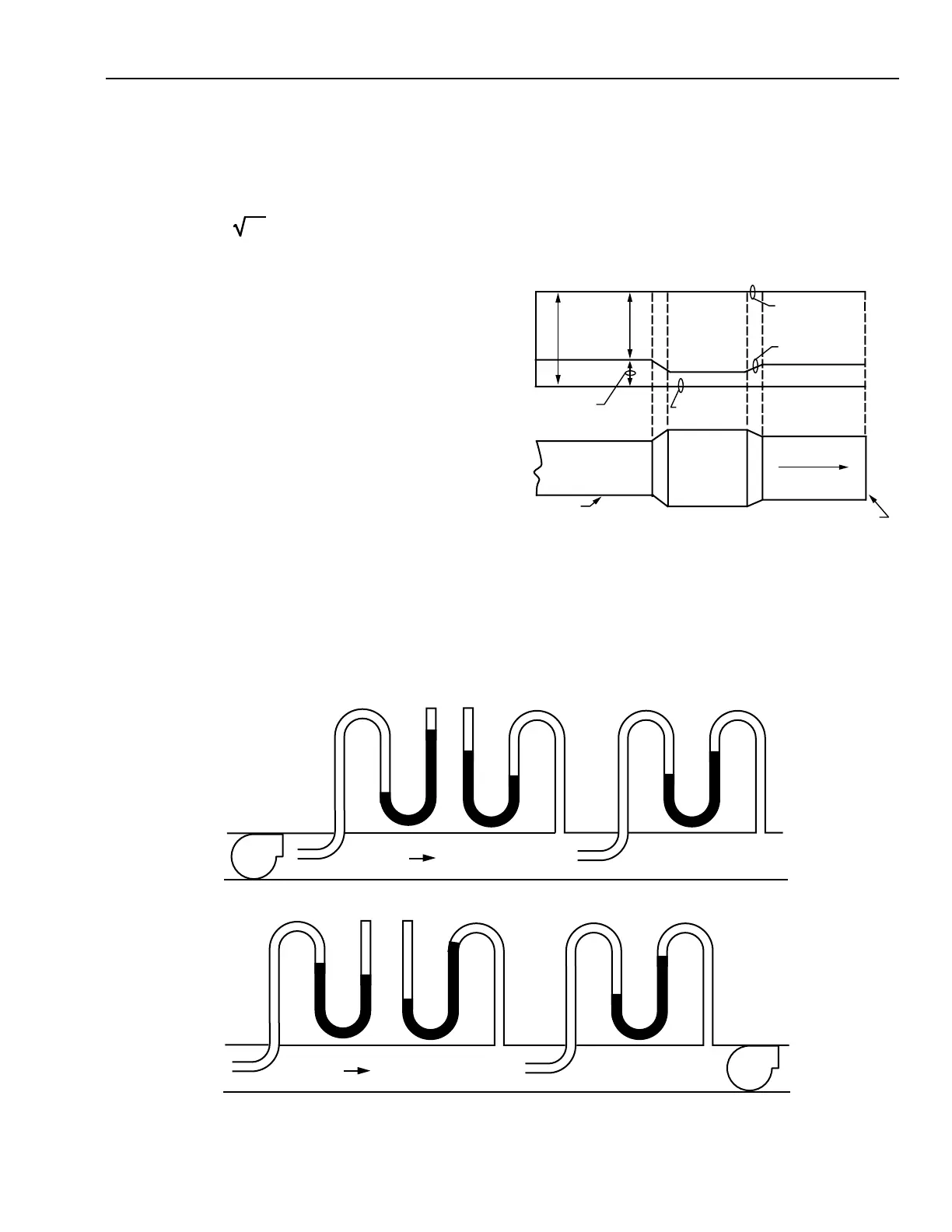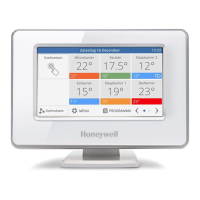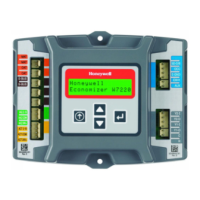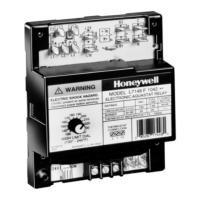ENGINEERING MANUAL OF AUTOMATION CONTROL
BUILDING AIRFLOW SYSTEM CONTROL APPLICATIONS
275
pressure are measured in inches of water column (in. wc). Total
pressure is the sum of the static and velocity pressure and,
therefore, is also measured in inches of water column.
In an airflow system, the relationship between velocity
pressure and velocity is:
NOTE: See Velocity Pressure in DEFINITIONS for a
derivation of this formula.
If the velocity and duct size are known, the volume of airflow
can be determined:
Q=AV
Where:
Q=Airflow in cubic feet per minute (cfm)
A=Cross-sectional area of duct in square feet (ft
2
)
V=Velocity in feet per minute (fpm)
Examples of the relationships between total, velocity, and
static pressures are shown in Figure 8A for positive duct static
pressures and Figure 8B for negative duct static pressures. When
static pressure is above atmospheric pressure it is positive and
when below atmospheric pressure it is negative. The examples
use U-tube manometers to read pressure. The sensor connected
to the U-tube determines the type of pressure measured.
V = 4005 VP
Fig. 8. Relationships of Total, Static, and Velocity Pressures for Positive and Negative Duct Static Pressures.
TOTAL PRESSURE
STATIC PRESSURE
AIRFLOW
FAN
A. PRESSURE IN THIS DUCT ABOVE ATMOSPHERIC PRESSURE
TOTAL PRESSURE VELOCITY PRESSURE
B. PRESSURE IN THIS DUCT BELOW ATMOSPHERIC PRESSURE
C2643
AIRFLOW
FAN
STATIC PRESSURE
VELOCITY PRESSURE
In a theoretical duct system without friction losses, the total
pressure is constant along the entire duct (Fig. 9). The static
and velocity pressures, however, change with every change in
the duct cross-sectional area. Since the velocity decreases in
larger duct sections, the velocity pressure also decreases, but
the static pressure increases. When theoretical ducts change
size, static pressure is transformed into velocity pressure and
vice versa.
Fig. 9. Theoretical Changes in Pressure with
Changes in Duct Area.
TOTAL
PRESSURE
STATIC
PRESSURE
TOTAL PRESSURE
VELOCITY
PRESSURE
VELOCITY
PRESSURE
ATMOSPHERIC
PRESSURE
DIRECTION
OF AIRFLOW
AIR DUCT
OPEN END
OF DUCT
C2644

